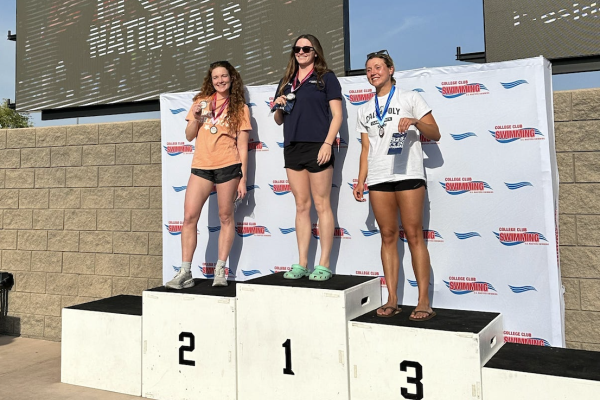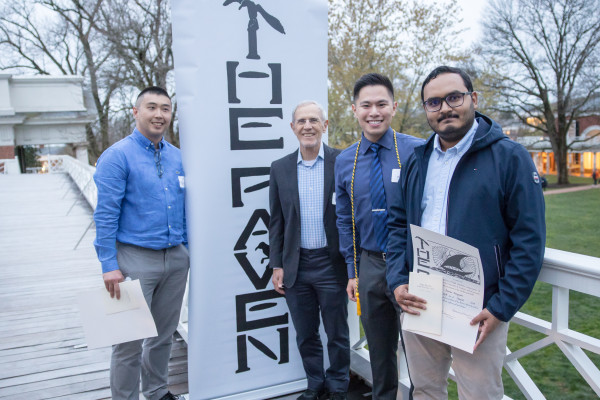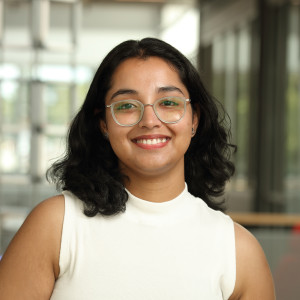
Data science with heart and vision: Meet Ph.D. student Medhasweta Sen

Medhasweta Sen
Hometown:
Kolkata, West Bengal, India
Education:
Ph.D. in Data Science, University of Virginia
M.S. in Data Science 2024, The George Washington University
B.S. in Statistics (Honors) 2022, University of Calcutta
Choosing the right doctoral program is a pivotal step for aspiring researchers, and every journey into the world of data science is as unique as the students themselves. For Medhasweta Sen, who grew up in the vibrant city of Kolkata, India, and has already earned degrees in statistics and data science from esteemed institutions, the path to the University of Virginia’s (UVA) School of Data Science was as much about intellectual fit as it was about finding a collaborative, supportive home for the next chapter of her academic journey.
Medhasweta’s story exemplifies the global spirit and interdisciplinary drive that define UVA’s Ph.D. in Data Science program. With foundational training from the University of Calcutta and The George Washington University, she brings both technical rigor and a passion for real-world impact to her research. Drawn by UVA’s dedicated School of Data Science and its culture of innovation, she’s now delving into cutting-edge topics like large language models (LLMs), multimodal learning, AI ethics, and healthcare applications—all while building bridges between theory and practice.
In this Q&A, Medhasweta shares what led her to UVA, how her interests in statistics and data science evolved, what excites her most about her research, and her aspirations for a future shaped by responsible, transformative technology. Whether you’re considering a Ph.D., exploring the world of AI and data science, or simply want to learn from a passionate early-career researcher, Medhasweta’s insights offer both inspiration and practical advice. Read on to discover Medhasweta's data science journey.
Q: Choosing a doctoral program is a big decision. Why did you choose UVA's Ph.D. in Data Science?
Several factors influenced my decision to choose UVA's Ph.D. in Data Science program. One of the key aspects was the School of Data Science itself. I was impressed that the program is hosted within its own dedicated school, rather than being housed within a single parent field. This setup truly embodies the interdisciplinary nature of data science, fostering collaboration across various departments at UVA, from statistics and computer science to physics, business, and environmental studies.
I was also drawn to the opportunity to work with the outstanding faculty whose research interests align closely with my own. The program structure stood out to me as well; it’s formulated yet flexible enough to allow me to explore the breadth of the subject and tailor it to my interests.
Another highlight was the supportive environment—I loved how encouraging the staff and admissions office were throughout the application process. Additionally, I appreciated the industry collaborations fostered within the very foundation of the school, offering valuable connections and practical experience. Lastly, the location was a major plus with the School being close to the Northern Virginia and D.C. areas I've grown to love over the past two years during my master’s. That made the choice feel even more right.
Q: When and how did you become interested in data science?
My interest in data science began during my undergraduate studies when I was immersed in statistics and wanted to understand how it applied in the real world. That’s when I discovered data science—a field that is a perfect amalgamation of statistics, computer science, and domain expertise. This realization drove me to pursue a Master's in Data Science, with the goal of leveraging data to solve real-world problems and inform decision-making across various domains.
During my master's program, everything started to come together. I realized that data science was much more than just working with numbers; it had a tangible impact. I had the opportunity to work on projects ranging from trend prediction to process optimization, and it was fascinating to see how these skills could be applied in diverse areas like medicine and physics.
What I find most compelling about data science is its research aspect. It's inherently exploratory, like being on a quest for hidden insights. Every dataset presents a new challenge, and the excitement of uncovering something unexpected is what fuels my passion for this field.
Q: What areas of research interest you and why?
My primary research interest lies in leveraging Large Language Models (LLMs) for versatile tasks, particularly in addressing multimodal problems. One of the reasons I'm drawn to this area is the potential of LLMs to bridge gaps between different types of data, creating more comprehensive and adaptable models. Currently, I'm exploring how LLMs can be used for time series annotation, which has practical applications in fields like finance, healthcare, and climate science. By applying LLMs in this context, we can develop more intuitive methods for analyzing and predicting trends from complex datasets.
I'm also fascinated by Natural Language Understanding and the challenge of making LLMs more adaptable and efficient. This includes areas like fine-tuning and model editing for information retrieval and user interaction. The ability to fine-tune models more easily means we can tailor LLMs to specific tasks or domains without requiring massive computational resources. This is crucial for applications in specialized fields, such as healthcare, where personalized and accurate language models can make a significant impact.
Another area that interests me is reducing toxicity in LLMs to enable broader use in sensitive domains. By developing methods to minimize harmful or biased outputs, we can ensure that these models are safe and ethical for use in various settings. This is particularly important for applications where the stakes are high, such as in patient care or legal contexts, where the accuracy and appropriateness of language models can have real-world consequences.
Q: What do you hope to do with your data science degree?
With my data science degree, I hope to contribute to advancing the capabilities of LLMs and their applications in various fields. My current focus is on utilizing transformer and encoder-decoder architectures to tackle multimodal tasks and challenges in domains like healthcare and finance. I aim to work on developing more versatile and ethical AI systems by enhancing how these models can be fine-tuned and reducing their potential for harmful biases.
While I'm currently exploring the transformer models, I'm also open to experimenting with and incorporating new state-of-the-art architectures as they emerge. I believe staying at the forefront of AI research is crucial to making these technologies more accessible and reliable across industries. Ultimately, I aspire to bridge the gap between cutting-edge research and practical applications, using data science to drive innovation and solve real-world problems. Whether it's through academic research, industry collaboration, or developing new tools, my goal is to make a meaningful
impact on how data and AI are used to enhance decision-making and improve lives.
Q: What advice would you give to prospective students considering a Ph.D. in Data Science? What do you wish you had known before starting?
As I embark on my doctoral studies in Data Science, the best advice I've received so far is to focus on the problem I'm passionate about solving, rather than getting too attached to the tools or technologies used. This is because state-of-the-art techniques can change rapidly.
For instance, not long ago, the leading approach for Natural Language Processing (NLP) tasks was Long Short-Term Memory (LSTM). However, with the introduction of the "Attention is All You Need" paper, the landscape shifted almost overnight. Bidirectional Encoder Representations from Transformers (BERT) and self-attention mechanisms quickly gained traction, making LSTM seem outdated. The field then progressed from BERT’s encoder architecture to models like GPT-2 (decoder) and BART (encoder-decoder), moving far beyond traditional Recurrent Neural Networks (RNNs).
In such a fast-paced environment, it's more effective to focus on a persistent problem or gap within the community—whether it's addressing a user need or filling a research vacuum. This approach allows for a more significant impact, regardless of the tools being used, as long as the solutions developed are tangible, scalable, and efficient. By concentrating on the core issue, rather than the transient nature of the tools, we should be amenable to creating solutions that stand the test of time and adapt to the evolving technological landscape.







